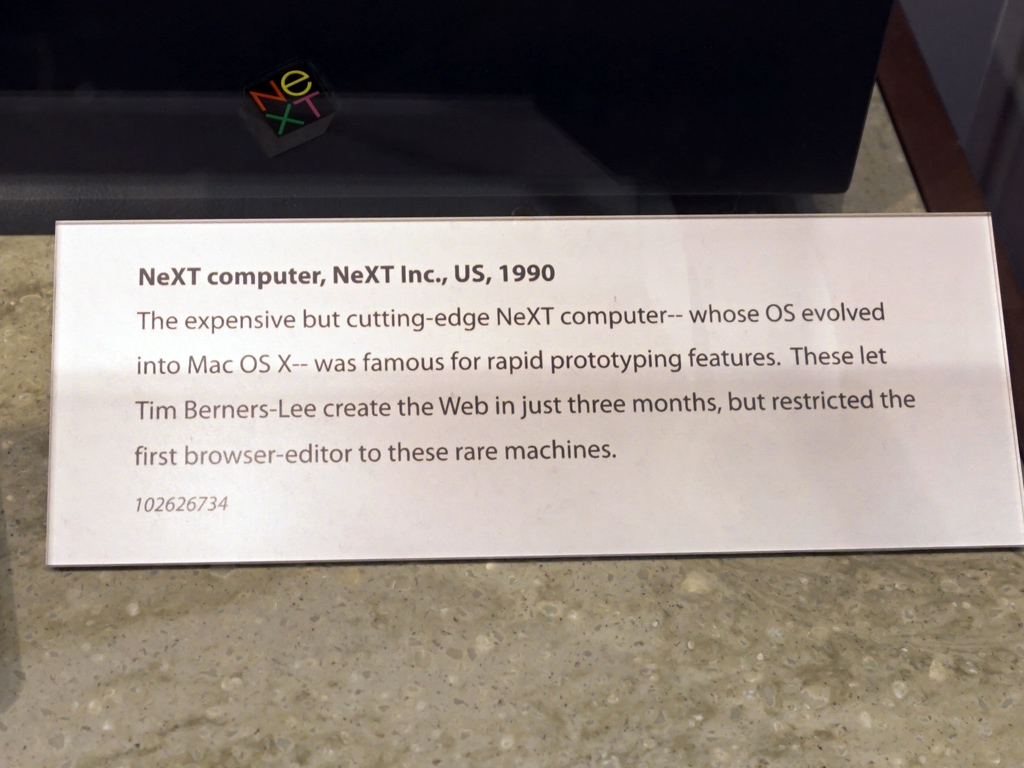Computer History: From The Antikythera Mechanism To The Modern Era
In this article, we shed light on the most important moments in computer history, acknowledging the people that have contributed to this evolution.
NeXT Cube
In May 1985, Apple co-founder, Steve Jobs, left his own company (mainly because of a fight that he had with the chairman, John Sculley, who was initially recruited by Jobs himself). Jobs immediately established another company, called NeXT, Inc. (and Next Computer, Inc. later). NeXT released a real technological marvel in 1989: the NeXT Cube computer.
NeXTSTEP Operating System: Cube's Hardware
The NeXT computer used the NeXTSTEP operating system, based on Unix. The nickname "the Cube" was a reflection of its cube-shaped chassis. Its features were impressive for the time.
For starters, the computer was equipped with a hard disk (HDD), which was offered with either 330MB or 660MB capacity. In addition, the computer came with a magneto-optical drive that had the ability to write and rewrite data on magneto-optical discs with up to 256MB capacities. However, the magneto-optical drive was very slow and created significant performance problems for the Cube, so in the next revision it was replaced by an HDD.
The Cube supported a maximum resolution of 1120 x 832 pixels with four gray scales in the 17" screen that was shipped along with it. This specific resolution was considered very high at this time. The first Cube used the Motorola 68030 CPU, which was backed up by the 68882 mathematical co-processor. Moreover, the computer was equipped with a digital signal processor that handled the execution of multimedia applications, and the RAM had 8MB capacity, expandable up to 64MB.
There was also an Ethernet port and a laser printer, with 400 DPI resolution. NeXT's computer was very expensive ($6500 at its 1988 launch), and its sales were limited.


For comparison, we should mention that a typical PC during this period had 640KB of RAM, upgradeable up to 4MB, and used mostly the 8086, 8088 and 80286 Intel CPUs; only the high-end PCs used the faster 80386. PCs supported screen resolutions of 640 x 350 maximum, with 16 colors or 720 x 348 monochrome. HDD capacity was only 10 or 20 MB. In other words, the difference between a NeXT and a typical PC was quite dramatic.
NeXT Cube
In 1990, after the production of the first NeXT computer ended, a new NeXT computer immediately hit the market, and this time it was officially called the Cube. The NeXT Cube was equipped with a faster CPU, the Motorola 68040, and instead of the magneto-optical drive, it used a 3 ½" floppy drive with 2.88 MB capacity (after a while a CD-ROM drive replaced it). The new Cube also had an HDD and used a specially designed graphics processor.
Get Tom's Hardware's best news and in-depth reviews, straight to your inbox.
NeXT prices didn't stop some buyers from using the systems in some highly innovative projects. In 1991, with the help of NeXT, the creator of the World Wide Web (WWW), Sir Tim Berners-Lee, created the first browser and the first web server. At the same time, programmer John Carmack played a key role in the development of the Wolfenstein 3D with his new NeXT Cube machine; Carmack used the same computer to develop the legendary Doom games.
In 1996 NeXT was acquired by Apple and Jobs once again took over managing the company he co-created. Many innovative ideas that belonged to NeXT passed onto Apple products, with the more radical change happening to the Apple operating system. Since Mac OS X Server 1.0, released in 1999, all Mac OS versions are derived from the NeXTSTEP operating system, and the main programming language for all Apple products is Objective-C, which was used extensively in NeXT computers.
MORE: All Gaming Content
MORE: Gaming At 3840x2160: Is Your PC Ready For A 4K Display
Current page: NeXT Cube
Prev Page Intel 80386 And The Attack Of The Clone PCs - Acorn Archimedes Next Page The First Graphics Processing Units (GPUs)
Aris Mpitziopoulos is a contributing editor at Tom's Hardware, covering PSUs.
